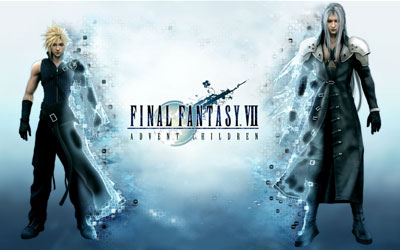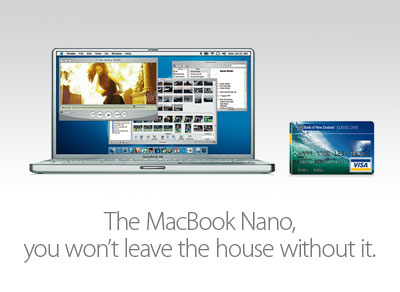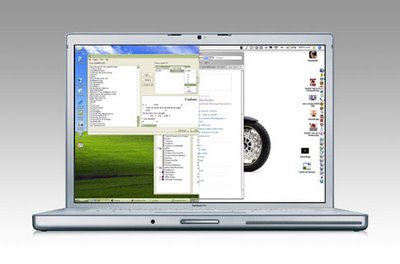
In a move consistent with its desire to attract a 'non-gamer' audience, Nintendo's Shigeru Miyamoto (creator of Mario, Zelda... now Director and General Manager of Nintendo Entertainment Analysis and Development) invited one of Time's non-gaming reporters to try out its new hardware. The result is an entertaining and informative article that reinforces my admiration for Nintendo's refusal to accept the status quo.
I encourage you to read the whole article, but here are some excerpts to whet your appetite...
All three [major games consoles] - PlayStation 2, Xbox and GameCube - are showing their age... Microsoft launched its next-gen Xbox 360 in November of last year; Nintendo and Sony will launch their new machines this fall. Those changeovers, which happen every four or five years, are moments of opportunity in the gaming industry, when the guard changes and the underdog has its day. Nintendo... will attempt to steal a march on its competitors with a bizarre wireless device that senses a player's movements and uses them to control video games. Even more bizarre is the fact that it might work.
Video games are an unusual medium in that they carry a heavy stigma among nongamers. Not everybody likes ballet, but most nonballet fans don't accuse ballet of leading to violent crime and mental backwardness. Video games aren't so lucky. There's a sharp divide between gamers and nongamers, and the result is a market that, while large and devoted - last year video-game software and hardware brought in $27 billion - is also deeply stagnant. Its borders are sharply defined, and they're not expanding.
And even within that core market, the industry is deeply troubled. Fewer innovative games are being published, and gamers are getting bored. Games have become so expensive to create that companies won't risk money on fresh ideas, and the result is a plague of sequels and movie spin-offs. "Take Tetris, for example," says Iwata, 46, a well-dressed man who radiates good-humored intelligence. "If someone were to take Tetris to a video-game publisher today, what would happen? The publisher would say, 'These graphics look kind of cheap. And this is a fun little mechanic, but you need more game modes in there. Maybe you can throw in some CG movies to make it a little bit flashier? And maybe we can tie it in with some kind of movie license?'" Voila: a good game ruined.
"The one topic we've considered and debated at Nintendo for a very long time is, Why do people who don't play video games not play them?" Iwata has been asking himself, and his employees, that question for the past five years. And what Iwata has noticed is something that most gamers have long ago forgotten: to nongamers, video games are really hard. Like hard as in homework. The standard video-game controller is a kind of Siamese-twin affair, two joysticks fused together and studded with buttons, two triggers and a four-way toggle switch called a d-pad. In a game like Halo, players have to manipulate both joysticks simultaneously while working both triggers and pounding half a dozen buttons at the same time. The learning curve is steep.
That presents a problem of what engineers call interface design: How do you make it easier for players to tell the machine what they want it to do? "During the past five years, we were always telling them we have to do something new, something very different," Miyamoto says. "And the game interface has to be the key. Without changing the interface we could not attract nongamers."
So they changed it. Nintendo threw away the controller-as-we-know-it and replaced it with something that nobody in his right mind would recognize as video-game hardware at all: a short, stubby, wireless wand that resembles nothing so much as a TV remote control. Humble as it looks on the outside, it's packed full of gadgetry: it's part laser pointer and part motion sensor, so it knows where you're aiming it, when and how fast you move it and how far it is from the TV screen. There's a strong whiff of voodoo about it. If you want your character on the screen to swing a sword, you just swing the controller. If you want to aim your gun, you just aim the wand and pull the trigger.
Nintendo gave TIME the first look at its new controller... It's a remarkable experience. Instead of passively playing the games, with the new controller you physically perform them. You act them out. It's almost like theater: the fourth wall between game and player dissolves. The sense of immersion - the illusion that you, personally, are projected into the game world - is powerful. And there's an instant party atmosphere in the room. One advantage of the new controller is that it not only is fun, it looks fun. When you play with an old-style controller, you look like a loser, a blank-eyed joystick fondler. But when you're jumping around and shaking your hulamaker, everybody's having a good time.
After Warioware, we play scenes from the upcoming Legend of Zelda title, Twilight Princess, a moody, dark (by Nintendo's Disneyesque standards) fantasy adventure. Now I'm Errol Flynn, sword fighting with the controller, then aiming a bow and arrow, then using it as a fishing rod, reeling in a stubborn virtual fish. The third game, and probably the most fun, is also the simplest: tennis. The controller becomes a racket, and I'm smacking forehands and stroking backhands. The sensors are fine enough that you can scoop under the ball to lob it, or slice it for spin. At the end, I don't so much put the controller down as have it pried from my hands.
Of course, hardware is only half the picture. The other half is the games themselves. "We created a task force internally at Nintendo," Iwata says, "whose objective was to come up with games that would attract people who don't play games." Last year they set out to design a game for the elderly. Amazingly, they succeeded. Brain Age is a set of electronic puzzles (including Sudoku) that purports to keep aging minds nimble. It was released for one of Nintendo's portable platforms, the Nintendo DS, last year. So far, it has sold 2 million copies, many of them to people who had never bought a game before.
The real demographic grail for any game publisher is, of course, girls. And although females have historically been largely impervious to the charms of video gaming, Nintendo has made inroads even there, with products so offbeat that they barely qualify as games at all. In Nintendogs, the object is to raise and train a cute puppy.
Electroplankton can only be described as a game about farming tiny singing microbes (surely every woman's dream?). In Animal Crossing, you take up residence in a tiny cartoon town where you plant flowers and go fishing and design shirts. You can visit other players' towns and trade shirts with them. The reaction from traditional gamers tends to be 'Fine, but who do I shoot at?' But Animal Crossing is a hit, and Nintendogs has sold 6 million copies. (Incidentally, Miyamoto points out that Animal Crossing wasn't originally designed for girls. "Many female schoolchildren are purchasing and enjoying it," he says, cracking himself up. "Also ladies in their 20s. But the fact of the matter is, this game was developed by middle-aged guys in their 30s and 40s. They just wanted to create something to play themselves.")
Nintendo has grasped two important notions that have eluded its competitors. The first is, Don't listen to your customers. The hard-core gaming community is extremely vocal - they blog a lot--but if Nintendo kept listening to them, hard-core gamers would be the only audience it ever had. "[Wii] was unimaginable for them," Iwata says. "And because it was unimaginable, they could not say that they wanted it. If you are simply listening to requests from the customer, you can satisfy their needs, but you can never surprise them. Sony and Microsoft make daily-necessity kinds of things. They have to listen to the needs of the customers and try to comply with their requests. That kind of approach has been deeply ingrained in their minds."
And here's the second notion: Cutting-edge design has become more important than cutting-edge technology. There is a persistent belief among engineers that consumers want more power and more features. That is incorrect. Look at Apple's iPod, a device that didn't and doesn't do much more than the competition. It won because it's easier, and sexier, to use. In many ways, Nintendo is the Apple of the gaming world, and it's betting its future on the same wisdom.
------------

















































